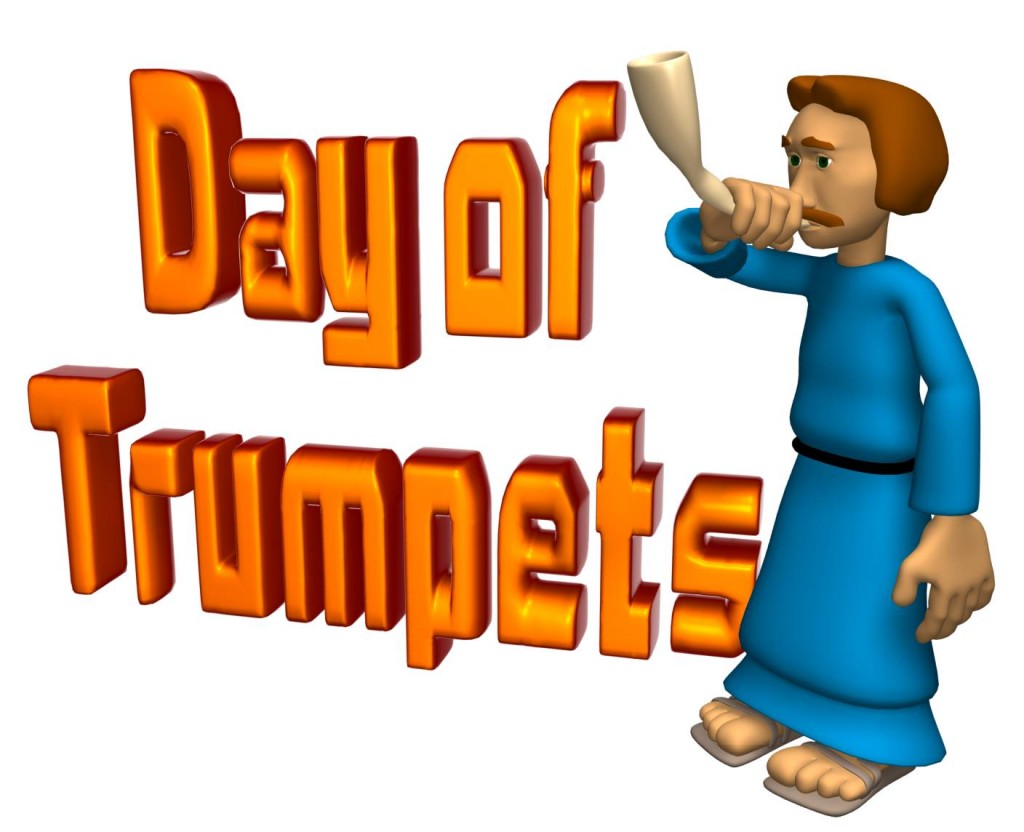Happy Yom Teruah!
The fourth biblical holiday (the first one of the fall season) begins tonight according the ancient biblical calendar (as opposed to the modern, rabbinic, Constantine calendar used by most religious Jews and many Messianics). In the Bible, this holiday or holy day is called Yom Teruah (Lev 23:23–25). The modern religious Jews have their own holiday, which is a substitute for the biblical Yom Teruah, and which usually falls on a different day. They call this substitute holiday Rosh Hashana. It has very little to do with the true biblical holiday of Yom Teruah. You will understand this more fully as you read below.
To learn more about Yom Teruah and what it signifies past, present and future and to learn how to celebrate it, I invite you to read my article on the subject (below).
The Historical Roots of Our Faith, Present Relevance for Believers & Prophetic End-Time Implications
Arise thou that sleepest, and arise from the dead, and Messiah shall give thee light. (Eph 5:14, also 8–16)
Yom Teruah—The Beginning of the Fall (End-Time) Harvest
Yom Teruah or the Day of Shouting; the Shofar Blasts (commonly called “Rosh Hashana”) occurs at the end of the summer months and marked the beginning of the fall harvest or festival season for the ancient Hebrews. Prophetically, the summer months between the spring feast of Shavuot/Weeks (Pentecost) and the fall feast of Yom Teruah is a spiritual picture of what is often called the “Church Age,” which is the period of time from the Feast of Pentecost in Acts 2 until the return of Yeshua the Messiah at the end of the age and lasting for approximately 2000 years. For many, especially those living in hotter climes, summer is a time of leisure, vacation, weariness and fatigue due to the excessive heat. Likewise, many Bible believers have fallen asleep growing spiritually weary while waiting for the return of the Messiah. Yeshua discusses this issue in the Parable of the Ten Virgins (Matt 25) who all grew weary and fell asleep awaiting the coming of the Bridegroom (Yeshua).
This all changes on the first day of the seventh month of the biblical Hebrew calendar when off in the distance the sound of a shofar blast suddenly pierces the atmosphere and registers in the eardrums of those who have fallen asleep. Not only does this shofar blast signal the beginning of the seventh month when the new crescent moon is sighted, but it announces the return of the Bridegroom (Yeshua) coming for his bride (the virgin saints). As in the Parable of the Ten Virgins, the cry went forth that the bridegroom was coming and all awoke from their slumber to prepare for his arrival. In these end days, that cry is going forth even now for all to hear, to awake and to prepare for the arrival of Yeshua the Messiah.
In the biblical calendar, the visible sighting of the crescent new moon always marks the beginning of the month and is announced by the shofar blast (Ps 81:3). Likewise, on the first day of the seventh month of the biblical calendar, the arrival of the new moon (called Rosh Chodesh) when the shofar sounds marks the beginning of Yom Teruah. This is the Continue reading


